|
This Roseate Spoonbill flight image was created with the tripod-mounted Canon EF 600mm f/4L IS II USM lens, the Canon 1.4x EF Extender III (Teleconverter), and the Canon EOS-1D X Digital SLR camera. ISO 400. Evaluative metering +1 stop as framed: 1/2500 sec. at f/5.6 in Manual mode. Central sensor/AI Servo/Rear Focus AF on the bird’s head just behind the eye active at the moment of exposure. Click here if you missed the Rear Focus Tutorial. Click on the image to see a larger version. Most trips to Alafia Banks offer numerous excellent spoonbill flight opportunities. |
If It Works and Feels Good, Do It Again
The first Fort Desoto/Hooptie Deux–Roseate Spoonbill Short Notice IPT was a huge success. Tons of learning and tons of great subjects and situations. And a great group. I will post a full IPT Report in the next BAA On-line Bulletin. Coming soon.
Announcing a 2nd New Concept IPT: the Fort Desoto/Hooptie Deux–Roseate Spoonbill Short Notice IPT/April 3-7, 2013/5 DAYS: $2399. Strict limit: six photographers.
Early April can be superb at Alafia Banks. Early April is almost always superb at Fort DeSoto.
Here is the structure and schedule: I will be leading the first three days of this IPT. James Shadle will be leading the last two days. We will do three Hooptie Deux trips, one full day and one morning only trip. The first day and one of the next two full days will be at Fort Desoto where the Laughing Gulls will be in splendid breeding plumage with their full black hoods, their wine-red bills, and white eye crescents. They are one of our most under-appreciated species. The Royal, Sandwich, and Forster’s Terns will also be in breeding plumage. And all of these species will be displaying, courting, and mating. You can also expect a variety of wading birds, especially Reddish Egret, and a variety of shorebirds including Long-billed Curlew, Marbled Godwit, Dunlin, American Oystercatcher, and many more. And you will need to beat the Willets off with a stick. The additional possibilities are too numerous to mention.
We will spend a full day on the Hooptie Deux with James Shadle on either Thursday or Friday depending on the weather. The morning will be at Alafia Banks with spoonbill as the main target species. There will be lots of great flight photography not only with spoonbills, many of which will be in full breeding plumage, but with Brown Pelicans and Double-crested Cormorants, Reddish Egret and White Ibis in full breeding plumage, Great Egret, Great Blue Heron, Turkey and Black Vultures, and lots more. The afternoon Hooptie trip will be at one of several fresh water heronries. James will trailer his customized pontoon boat to the best rookery. Subjects, depending on location, will likely include Cattle Egret, Snowy Egret, Little Blue Heron, Great Blue Heron, White Ibis, Black-crowned Night-heron, and Double-crested Cormorant. All nesting and in flight. Most but not all of the photography on a boat trip to the Banks with James is done while standing in the water with your tripod. James has lightweight chest waders and surf booties on board for all at no charge. Folks who wish to keep their expensive Gitzo tripods saltwater free often opt to use Drypods. Learn more here.
|
These displaying (sky-pointing) Roseate Spoonbills were photographed at Alafia Banks on the recently concluded Fort Desoto/Hooptie Deux IPT with the tripod-mounted Canon EF 600mm f/4L IS II USM lens, the Canon 2x EF Extender III (Teleconverter), and the Canon EOS-1D X. ISO 400. Evaluative metering -1 stop: 1/500 sec. at f/9 in Manual mode. The exposure was confirmed in advance via histogram check. Central sensor (by necessity)/AI Servo Expand/Rear Focus AF on the closest bird and re-compose. Click here if you missed the Rear Focus Tutorial. Click on the image for a larger version. We will get to photograph a great variety of breeding behaviors on the 2nd New Concept IPT: the Fort Desoto/Hooptie Deux–Roseate Spoonbill Short Notice IPT. |
Saturday and Sunday with James will feature a morning on the Hooptie Deux at Alafia Banks and one or more sessions at Honeymoon Island State Park where many dozens of pairs of Osprey are nesting. There will of course be lots of flight photography. Depending on the winds and weather there may be an afternoon session at a Wood Stork rookery or some local beaches that James knows well. All of the above (except for the leader schedule) is of course subject to change depending on the weather including wind and sky conditions as well as local conditions. James has an intimate knowledge of each location and has visited them regularly for many years. We will be staying in St. Petersburg, FL where we will be 30-45 minutes at most from all of our shooting locations.
All of the above plus practically private access to two of the planet’s premier photographic educators represents a rare opportunity to grow as a nature photographer. A $500 deposit is needed to hold your spot; call Jim or Jennifer asap at 1-863-692-0906. Your deposit may be placed with a credit card. Your payment in full by personal check will then be due along with your completed paperwork both sent via US Mail. Please print, read, and sign the release form here and include it with your check. If you would rather pay in full via personal check, please call or e-mail immediately to save your spot. As always, this IPT will run with only a single registrant. Yeah, I know that it might seem nuts but neither James nor I can live with telling folks who have arranged to take time off from work and made travel plans that we are cancelling a trip because we will not be making enough money to justify running it….
You can learn more about New Concept IPTs by clicking here and scrolling down. Be sure to check out the killer white morph Reddish Egret image there.
|
This Brown Pelican carrying nesting material was photographed with the tripod-mounted Canon EF 600mm f/4L IS II USM lens, the Canon 1.4x EF Extender III (Teleconverter), and the Canon EOS-1D X Digital SLR camera. ISO 800. Evaluative metering +2/3 stop as framed: 1/2000 sec. at f/7.1 in Manual mode. Central sensor/AI Servo/Rear Focus AF on the bird’s head just behind the eye active at the moment of exposure. Click here if you missed the Rear Focus Tutorial. Click on the image to see a larger version. During our after lunch editing sessions (by editing I mean selecting your keepers) we spent a lot of time discussing the nuances of ideal and less than ideal wing positions. Everyone learned a ton. In the field we spent an equal amount of time teaching folks about the effect of wind direction on bird photography. |
Fort DeSoto/Hooptie Deux/Roseate Spoonbill Short Notice IPT Kudos
I received the e-mail below from a participant after the conclusion of this IPT.
Hello Artie, I wanted to thank you again for the fantastic last-minute IPT! Your teachings were excellent, with tons of hands-on practice. I greatly enjoyed watching over your shoulder as you reviewed the criteria that you use to select your keepers after getting back from the field and then doing complete image optimizations in Photoshop. This experience will help me greatly when making my own selections and help me know what to strive for when shooting on my own. Thanks to you, my photography has been stepped up a level. I would absolutely recommend that people wanting to be serious with wildlife photography to sign up for your IPTs.
Collier, John and Monte, It was a very enjoyable experience to be part of this with you guys! You were all very nice and it would be fantastic meeting again. I wish you a safe trip back home. Very best, Steven
|
This image of a Willet flapping after its bath was made on March 8 at Fort Desoto on the Fort Desoto/Hooptie Deux Short Notice IPT with the hand held Canon EF 300mm f/2.8L IS II USM Telephoto Lens, the Canon 2x EF Extender III (Teleconverter), and the Canon EOS 5D Mark III camera body. ISO 400. Evaluative metering +1/3 stop: 1/1600 sec. at f/7.1 in Manual mode. Central sensor/AI Servo Surround/Rear Focus AF active at the moment of exposure. Click here if you missed the Rear Focus Tutorial. Click on the image for a larger version. Folks on the recently concluded Desoto/Hooptie Deux Short Notice IPT learned a ton about photographing bathing birds including why to frame wide, how to anticipate the flap, and which AF sensor and pattern(s) to use for a given species. |
Fort Desoto Site Guide
There have been some major changes at Fort Desoto. Most of them are good. I will, therefore, be updating the Fort Desoto Site Guide quite soon. Learn more about this great guide here. You can check out all of our Site Guides by clicking here.
|
This 3-frame in-camera Art Vivid HDR image of the sky at sunrise at Alafia Banks was created with the hand held Canon 24-105mm f/4L IS EF USM AF Lens and the Canon EOS 5D Mark III camera body. ISO 800. Evaluative metering +1 stop (+/-3 full stops): 1/125 sec. at f/5.6 was the base exposure. Central sensor/AI Servo Rear Focus AF and recompose. Click here if you missed the Rear Focus Tutorial. Be sure to click on the image to enjoy a larger version. We leave the dock early to photograph the blast off of Fish Crows in pre-dawn light. On the morning of March 10th it was cloudy until the sun cracked the horizon and lit things up. |
EOS-5D Mark III User’s Guide
In the EOS-5D Mark III User’s Guide You can learn everything that I know about the following important topics: 5D III exposure fine points, handling the WHITEs, the top LCD and all camera control buttons, 5D Mark III drive modes, how to manually select an AF sensor, choosing an AF Area Selection Mode, and Menu Item access. Coverage of almost all Menu Items and Custom Functions including: Image Quality, Auto Lighting Optimizer, Highlight Tone Priority, AF Configuration Tool (includes details on the custom Case setting that I use), Acceleration/deceleration tracking, Tracking sensitivity, Lens drive when AF impossible, Orientation linked AF point (I love this feature on the 5D III!), Highlight alert, Histogram display, Auto rotate, Custom Shooting Mode set-up, Safety shift, using the Q button, and setting up rear focus.Plus detailed instructions on how to set up for both in-camera HDR and in-camera multiple exposures.
The guide is–of course–written in my informal, easy-to-follow style. Learn more or purchase here.
|
This dancing dark morph Reddish Egret photograph was made on the last afternoon of the Fort Desoto/Hooptie Deux Short Notice IPT with the tripod-mounted Canon EF 600mm f/4L IS II USM lens, the Canon 1.4x EF Extender III (Teleconverter), and the Canon EOS-1D X Digital SLR camera. ISO 800. Evaluative metering +1 1/3 stops as framed: 1/1000 sec. at f/5.6 in Manual mode. 61-point/AI Servo/Rear Focus AF on the bird’s head just behind the eye active at the moment of exposure. Click here if you missed the Rear Focus Tutorial. Click on the image to see a larger version. Based on the wind and the weather my last- second decision to change of our afternoon shooting location paid off big time. I kept 45 images of this bird dancing and catching fish. 61-Point AF performed superbly here as it does with most situations featuring erratic action. |
Your Fave?
Take a moment to leave a comment and let us know which of the images presented here is your favorite. Be sure to let us know why.
EOS-1D X AF Guide
You can learn exactly how I set up and use this camera’s great new AF system in our EOS-1D X AF Guide. And you can learn about our other camera User’s Guides here.
Typos
On all blog posts, feel free to e-mail or leave a comment regarding any typos, wrong words, misspellings, omissions, or grammatical errors. Just be right. 🙂
Support the BAA Blog. Support the BAA Bulletins: Shop B&H here!
We want and need to keep providing you with the latest free information, photography and Photoshop lessons, and all manner of related information. Show your appreciation by making your purchases immediately after clicking on any of our B&H or Amazon Affiliate links in this blog post. Remember, B&H ain’t just photography!
Support the BAA Blog. Support the BAA Bulletins: Shop Amazon here!
And from the BAA On-line Store:
LensCoats. I have a LensCoat on each of my big lenses to protect them from nicks and thus increase their re-sales value. All my big lens LensCoat stuff is in Hardwood Snow pattern.
LegCoat Tripod Leg Covers. I have four tripods active and each has a Hardwood Snow LegCoat on it to help prevent further damage to my tender shoulders :) And you will love them in mega-cold weather....
Gitzo GT3532 LS CF Tripod. This one replaces the GT3530LS Tripod and will last you a lifetime. Learn more about this great tripod here.
Mongoose M3.6 Tripod Head. Right now this is the best tripod head around for use with lenses that weigh less than 9 pounds. For heavier lenses, check out the Wimberley V2 head.
Double Bubble Level. You will find one in my camera's hot shoe whenever I am not using flash.
The Lens Align Mark II. I use the Lens Align Mark II pretty much religiously to micro-adjust all of my gear an average of once a month and always before a major trip. Enjoy our free comprehensive tutorial here.
BreezeBrowser. I do not see how any digital photographer can exist without this program.
Delkin Flash Cards. I use and depend on Delkin compact Flash Cards and card readers most every day. Learn more about their great 700X and 1000X cards here or about my favorite Delkin card here.

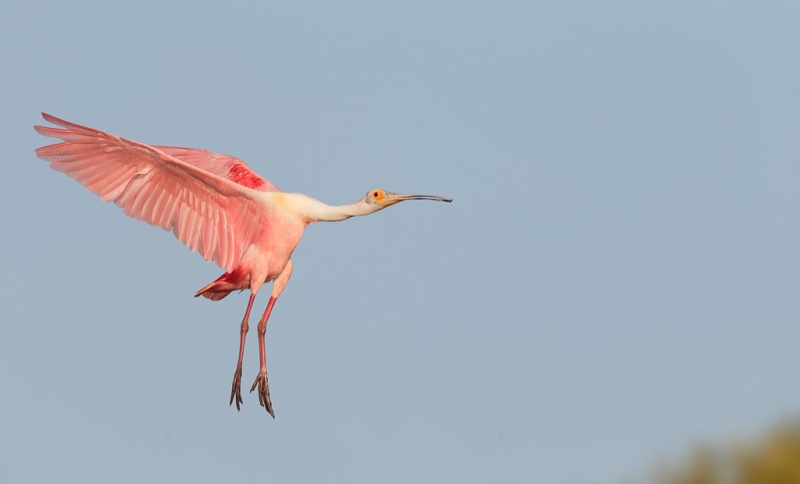
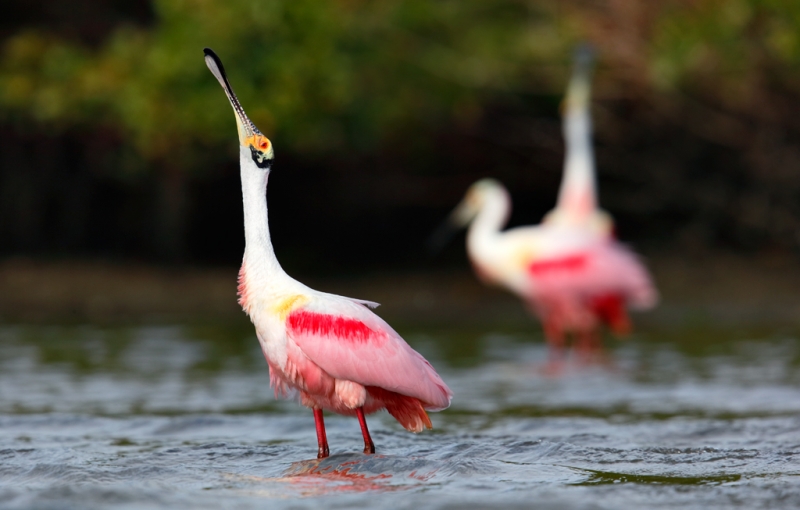
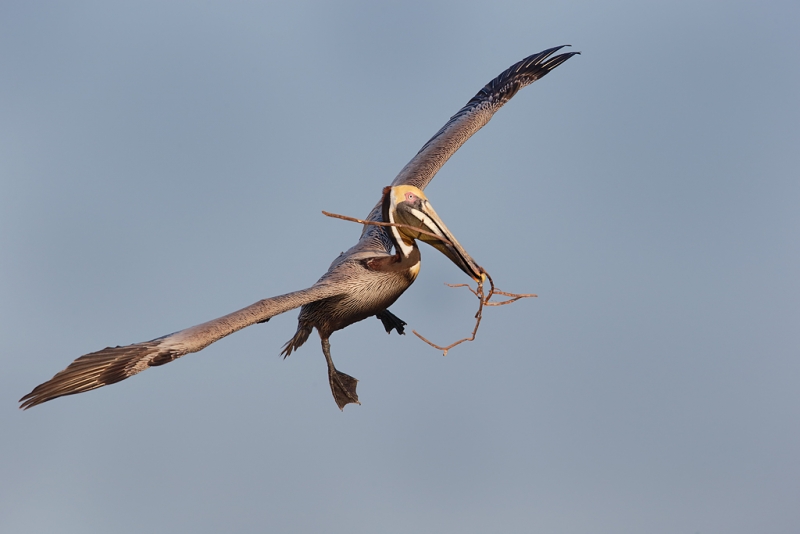
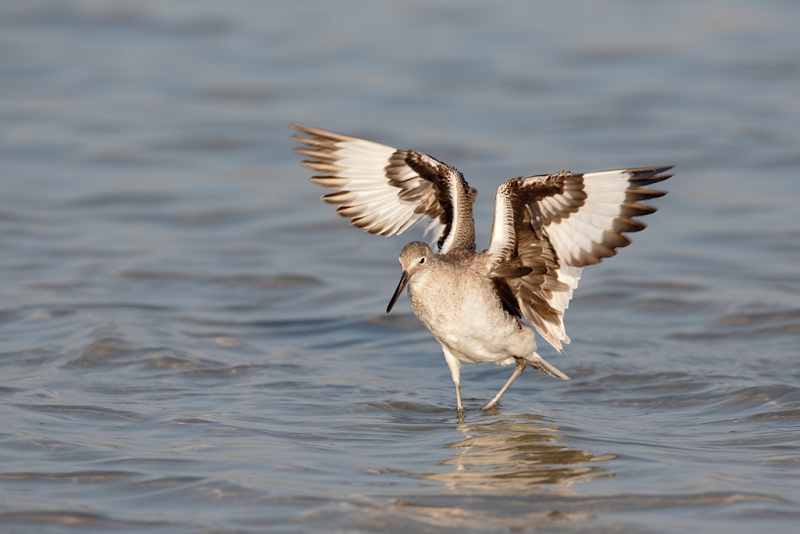
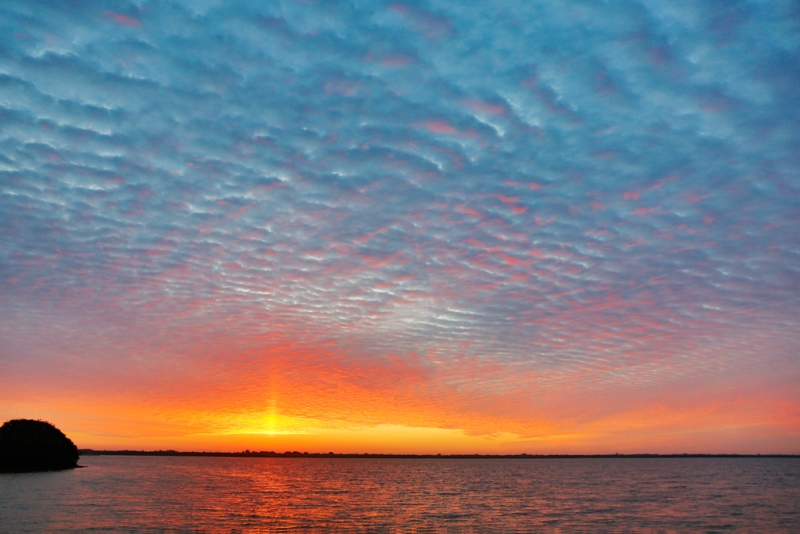
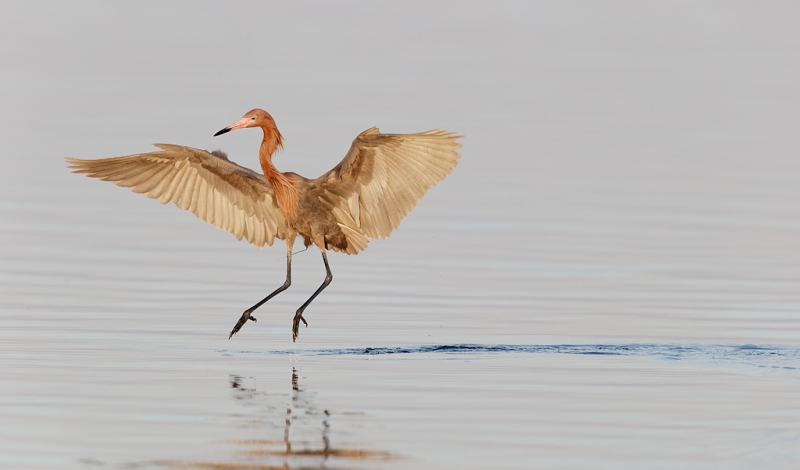













You got love mr. Morris work. These pictures are just amazing. That´s your God given gift mr. Morris. Thanks for sharing your knowledge and beautiful art with us!
Bless ya!
John Daniel – Brazil.
Thank you sir for your kind words. artie
i love the sunset picture.
Sunrise 🙂
Love the detail in the pelican in flight . . . and the clouds in the sunset image.